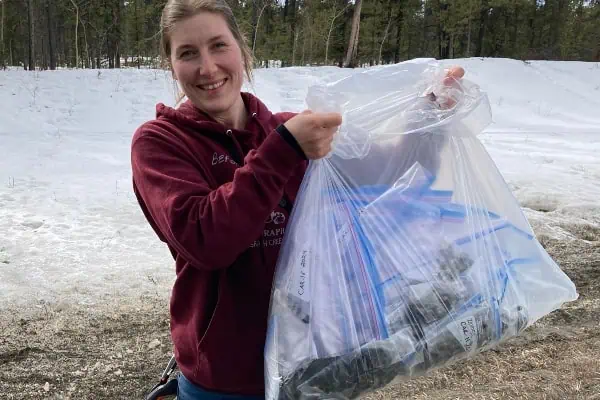I was making a carrot cake this week for one of the Jack Russell’s birthdays (he gets the carrot ends, we get the cake, seems like a pretty good deal), and the subject of peeling vegetables came up.
I have always been reticent about sending the outer portion of my fruits and vegetables to the compost, as much on principle as from any informed opinion. It seems a waste, and I’ve always associated the practice with the North American cultural requirement of food to conform to a sleek, blemish-free ideal that is far removed from the dirt from whence it originated.
My response? Keep the dirt! Keep the blemishes!
Okay, well perhaps not that extreme, but I do tend to have a contrary streak and have been known to over-compensate. This time, in a fit of maturity, instead of mounting my high horse and pontificating on the merits of veggies au naturel I took the opportunity to do a little research.
The problem with searching the internet is that within its vastness lies just as much misinformation as information – not just alternate opinions but downright falsehoods. Codswallop. Hogwash. I refuse to even use the term “alternative fact.”
In addition, search engine technology makes it is very easy to support one’s own opinion through the selection of search terms. “Vegetable peels health risk” yields a trove of websites stating the need to remove the deadly skins from our diets if we are to attain perfect health – possibly even immortality and a flat tummy. On the flip side, “Vegetables peel healthy” turns out an equally voluminous set of sites aimed at convincing the reader that by chowing down on chewy rinds we can eat our way to a cancer-free country and eliminate acne on the way.
It can all be a bit off-putting.
I sifted through domains in search of something recognisable and hopefully credible, landing eventually on Berkeley University’s Wellness page. (I acknowledge I may be showing my bias by choosing an institution in northern California. I also acknowledge that I am not a nutrition expert.)
Four zippy statements confirmed that many nutrients are stored in or just under the skin of vegetables and fruits. A fifth noted that washing with clean water should remove most chemical residues… I admit I do get a little squirrely about pesticides and am so grateful that the bulk of my produce is grown in my backyard – and we haven’t sprayed it with anything we wouldn’t be happy to ingest.
The point on potatoes suggested that skins are great, as long as they aren’t green. My kitchen debate continued on the question of bitterness and colour, so we turned to Ireland’s food safety authority for more information – may as well go to the experts.
It turns out that the bitter taste is due to a glycoalkaloid that is naturally produced in the tuber following damage and under certain less-than-perfect storage conditions. It isn’t deadly, but it certainly isn’t good for us – and it accumulates in the skin and eyes.
The green color is not actually directly related to levels of this chemical – it’s chlorophyll – but shows up in similar circumstances so can be used as an indicator. Bitter potatoes are best left uneaten, concludes the advice, with which I couldn’t agree more.
My main conclusion from these forays into the informational ether is that old wives’(and husbands’) tales about peeling vegetables and which potatoes to eat do begin with grains of truth. It is worth re-investigating their origins once in awhile to understand whether or not they are still applicable. The times it seems, are still a-changin’.
Carrot Cake Questionnaire
A simple carrot cake is a valuable part of any northern baker’s toolbox, highlighting one of our very growable vegetables that can last all winter. It’s also an opportunity for individualisation… I go for walnuts, no raisins, and rhubarb tossed in a little sugar instead of the oft-suggested tin of pineapple. Icing made with local chèvre tops it off delightfully. What is in your perfect cake?




